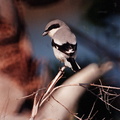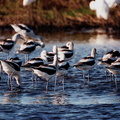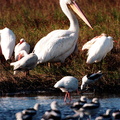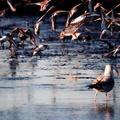
WIKIARCHIVES.SPACE
The Human Spaceflight Archive

Information
- Taken in
- Kennedy Space Center
- Author
- NASA
- Description
- A flock of American avocets take time to feed in the waters of the Merritt Island National Wildlife Refuge, which shares a boundary with Kennedy Space Center. Avocets are not commonly seen in the East, but range from Washington and Manitoba south to Texas and California. However, avocets may stray eastward to the Atlantic coast during their southward migration in the fall. Their common habitat is freshwater marshes and shallow marshy lakes. Much like spoonbills, they sweep their bills from side to side along the surface of the water to pick up crustaceans, aquatic insects and floating seeds. The Refuge encompasses 92,000 acres that are a habitat for more than 331 species of birds, 31 mammals, 117 fishes, and 65 amphibians and reptiles. The marshes and open water of the refuge provide wintering areas for 23 species of migratory waterfowl, as well as a year-round home for great blue herons, great egrets, wood storks, cormorants, brown pelicans and other species of marsh and shore birds, as well as a variety of insects.
- Created on
- Monday 13 December 1999
- Source link
- https://science.ksc.nasa.gov/gallery/photos/1999/
- Visits
- 62
- Rating score
- no rate
- Rate this photo
- License
- CC BY-NC-ND
- Modified by WikiArchives
- No (original)
- Downloads
- 1
Powered by Piwigo










